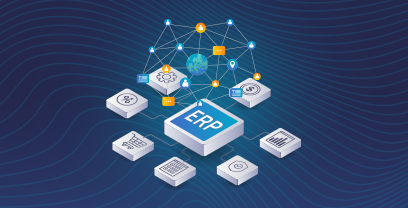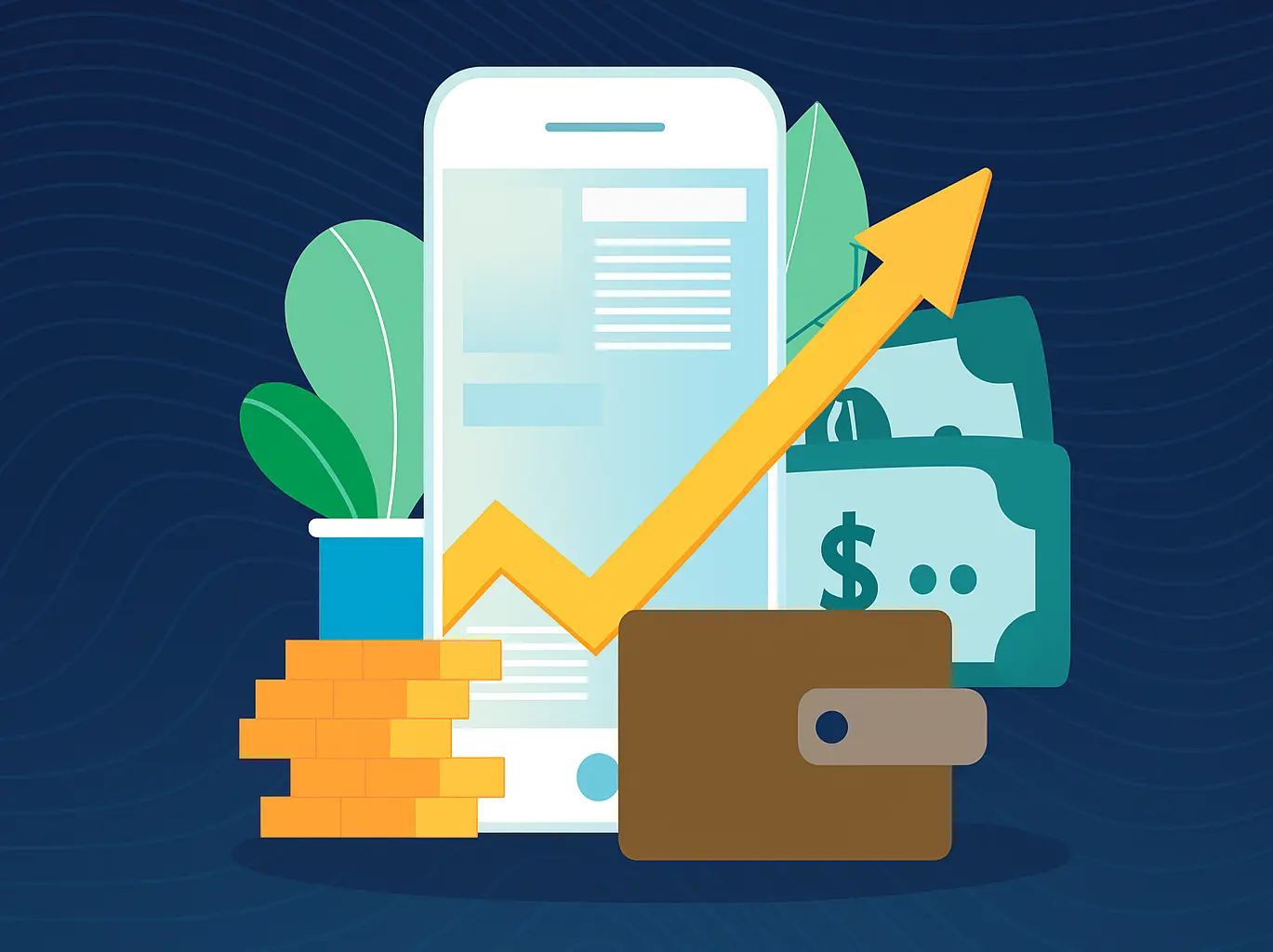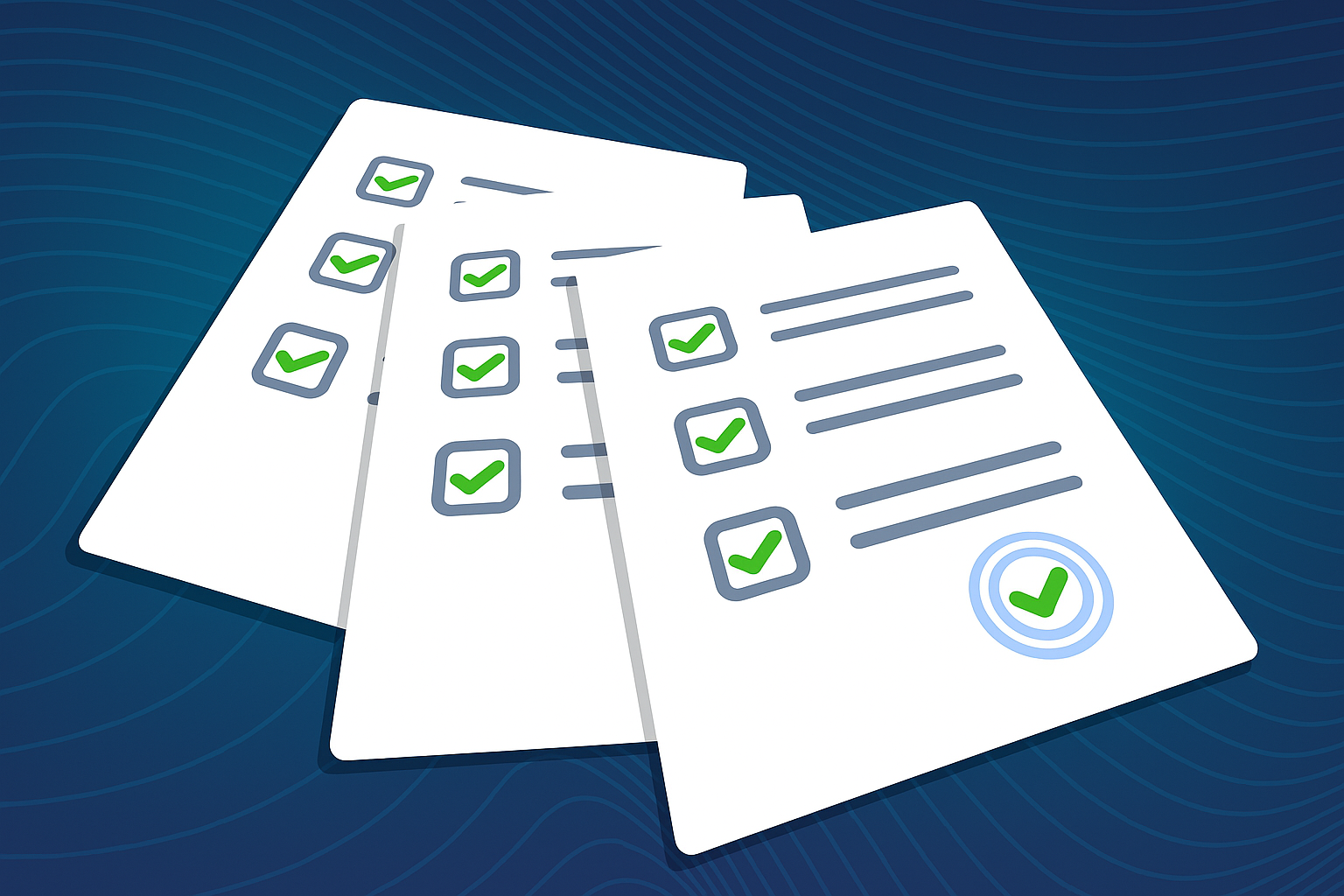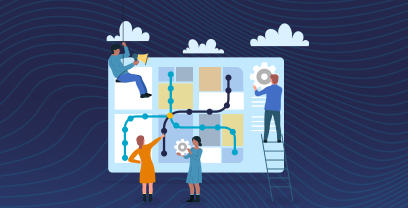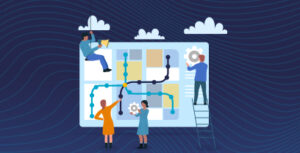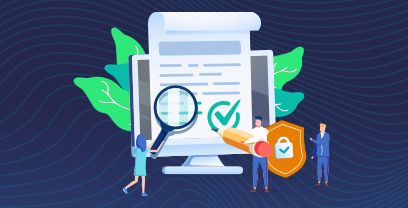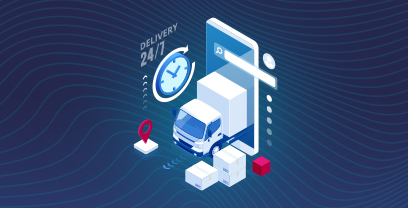If your procurement team is juggling multiple ERP systems, you’re likely spending more time chasing data than driving strategy. Disconnected supplier records, inconsistent processes, and limited visibility can impair efficiency and open the door to shadow spend. All of which diminishes procurement’s impact across your organization.
The good news is you can solve this problem without starting from scratch.
In this blog, we explore how you can overcome these challenges with a unified, procurement-first approach that doesn’t require replacing existing ERP infrastructure. You’ll learn how Ivalua’s unified platform integrates seamlessly with multiple ERPs to centralize supplier data, streamline workflows, and drive measurable business results.
Key Takeaways
- Most ERPs aren’t designed for strategic procurement functions like sourcing, supplier collaboration, compliance tracking or collaborative transactions
- Multi-ERP environments create hidden inefficiencies, but unification helps solve them.
- Unified procurement drives real ROI and agility, along with improved compliance.
- Ivalua’s procurement platform seamlessly integrates across ERP systems, centralizing data and processes without disrupting core infrastructure.
- The gaps between ERPs, and within the procurement process creates shadow spend
Explore how leading organizations are unifying procurement across ERP systems to drive efficiency and control. Find Out More
ERP Procurement Process Flow
Let’s look at the ERP procurement process flow, starting with a definition.
An ERP-based procurement process helps organizations manage the purchasing process with greater efficiency, accuracy, and control. By automating and connecting key procurement steps, ERP systems reduce manual effort, improve compliance, and ensure real-time visibility into spend.
Here’s a breakdown of the typical ERP procurement process flow:
- Requisition Creation and Approval: A department identifies a need for goods or services and submits a purchase requisition within the ERP system. The requisition is then routed through predefined approval workflows to ensure budget alignment and policy compliance before moving forward.
- Supplier Selection and RFQ Management: Once the requisition is approved, procurement teams can initiate a supplier selection process. The ERP system helps issue and manage requests for quotation (RFQs), track responses, and compare bids to identify the best-fit supplier based on cost, availability, and terms.
- Purchase Order Generation: The ERP system generates a purchase order (PO) directly from the approved requisition and RFQ details. It includes key information such as quantities, pricing, delivery times, and terms, and is sent to the supplier electronically for confirmation.
- Goods Receipt and Inspection: When goods or services are delivered, receiving teams use the ERP system to record the delivery and inspect for accuracy and quality. This step ensures that what was ordered matches what was received, creating a record that ties back to the original PO and requisition.
- Invoice Matching and Payment Processing: Finally, the supplier invoice is submitted and automatically matched against the PO and goods receipt in the ERP system. If the details align, the invoice is approved for payment. Exceptions are flagged for review, helping to prevent errors and support audit readiness.
This connected process ensures procurement runs smoothly and is compliant from request to payment. However, ERP systems weren’t designed to deliver the end-to-end visibility, agility, or to collaborate with suppliers, essential for today’s procurement leaders. Cracks in the system will likely begin to impact performance as an organization grows.
Why ERP Creates Procurement Blind Spots
ERP systems are powerful when it comes to managing internal transactions, but they often fall short in the areas where procurement needs to be most strategic.
Take supplier collaboration. Most ERP systems don’t provide robust tools for onboarding, performance tracking, or real-time risk monitoring, which means those activities either happen outside the system or don’t happen consistently. A fragmented process slows down decision-making and increases risk.
When ERP workflows are rigid, sourcing and contracting are hard to manage, and teams must work around system limitations by using spreadsheets and disconnected tools. Without a dedicated sourcing layer, it’s difficult to standardize RFx events or track compliance to negotiated terms.
The issue extends into spend visibility as well. While ERPs store purchasing data, they don’t make it easy to classify or analyze that data in a way that surfaces opportunities or flags non-compliant spend.
To make matters worse, ERP-based procurement software is usually complex and unintuitive, which makes it harder for business users to adopt. They may avoid using the system, and that results in more inconsistent processes, more off-contract purchasing and, ultimately, more confusion. This is shadow spend, and could be eroding up to 10% of your margin.
These challenges are even more pronounced in organizations using multiple ERP systems across business units or regions. Each system may have its own structures, workflows, and data conventions, making it nearly impossible to get a unified view of suppliers, contracts, or spend.
This was a key issue for Chassis Brake, whose fragmented ERP environment and supplier management gaps we highlight in the case study at the end of this article.
Pro Tip
Download Ivalua’s Source-to-Pay Implementation Guide for practical steps to ensure a smooth, successful rollout.
Now, let’s examine the differences between traditional ERP systems unfit for modern procurement organizations.
Built for Manufacturing and Logistics, Not Procurement
ERP systems were originally designed for manufacturing, and logistics teams, to handle transactional processes like order fulfilment, order management, inventory management, and bookkeeping. While that makes them excellent for managing structured data and internal workflows, they’re not built to support the strategic demands of modern procurement.
Functions like sourcing, supplier risk management, and compliance workflows require dynamic collaboration and flexible, rules-based processes – capabilities that ERPs simply don’t provide natively. Instead, procurement teams bolt on spreadsheets and disconnected tools to manage RFx events or track compliance. This method simply isn’t scalable.
Siloed ERPs and Inconsistent Processes
Large enterprises may have multiple ERP environments, each serving a different region, business unit or subsidiary – and each one following its own rules and taxonomies. Unfortunately, this results in fragmented data and a lot of duplication.
Without a unified layer connecting procurement across the organization, teams lack visibility into global spend. What’s more, suppliers may be onboarded multiple times, and category strategies can be siloed. Procurement leaders trying to drive enterprise-wide initiatives quickly run into roadblocks and may miss opportunities for consolidation and savings.
Poor Supplier Collaboration and Onboarding
Even though procurement success hinges on supplier relationships, most ERP systems offer very little support for supplier onboarding or collaboration. Suppliers usually have to navigate different portals, complete paperwork manually and email documents back and forth.
Plus, there’s rarely a unified intake process or centralized view of supplier performance and compliance, which is frustrating to say the least. Worse, this approach lengthens onboarding times and adds risk.
No Real Procurement Intelligence
ERPs collect a lot of data, but they don’t make it actionable. Procurement insights are often buried in unstructured fields, scattered across systems, or locked behind reporting modules that weren’t built with sourcing or compliance in mind.
Without data insights, it’s hard to track KPIs, identify savings opportunities, or monitor risk across the supplier base. Even basic questions like “Which suppliers are underperforming?” or “Where are we spending off-contract?” can take days to answer, if at all.
Fortunately, procurement technology solutions like Ivalua offer capabilities that extend beyond traditional ERP systems. The next section explores how they’re different.
Solving the Procurement Puzzle in Multi-ERP Enterprises
Modern procurement teams operating across global, multi-entity organizations need more than what traditional ERP systems can deliver on their own. To unify procurement across geographies, business units, and supply basess, they must move beyond isolated workflows and fragmented data.
How? With a more connected, flexible digital procurement platform that complements ERP investments while closing critical functionality gaps. Critically, this makes it easy for users to stay compliant wherever they are working. Here’s what that looks like in practice.
Cross-Entity and Cross-Border Coordination
If you operate across multiple countries or subsidiaries, you face the challenge of managing localized requirements, different currencies, tax rules, approval hierarchies, and supplier sites/entities. Most ERP systems aren’t built to handle these aspects of procurement across geographies – at least not without expensive customization.
In contrast, Ivalua offers native support for multi-ERP integration natively, managing complexity without sacrificing consistency. Its open platform centralizes global processes while respecting local regulations and workflows – no custom code required. As a result, wherever the user is working, they follow the same process, and have access to the same tools.
Unified Vendor Records, Categories, and Spend Classifications
When supplier and spend data resides in multiple, disconnected ERPs, creating a single source of truth is nearly impossible. A shared data model enables consistent vendor records, standardized category taxonomy, and unified spend classification across procurement systems.
With Ivalua, a flexible data architecture and plug-and-play ERP integration enables you to harmonize supplier information and analyze spend holistically. This means that every stakeholder, from the SRM team to the finance team, even the treasurer, has the same view of the supplier risk, data, and scores. This cuts out fraud, waste, and poor investments.
Supplier Enablement and Collaboration Tools
ERP systems typically offer limited support for supplier collaboration, forcing teams to manage RFX events, document exchanges, and risk assessments through disconnected processes.
Ivalua brings all this into a single, integrated source-to-pay platform. Running sourcing events, gathering compliance documentation or monitoring supplier performance all happens in one environment, which improves agility and speed for both procurement teams and suppliers. The outcome is that suppliers onboard quickly, because it saves them money, opens up new opportunities, and helps them get paid faster.
Workflow Configurability Without Code
Global procurement operations need to adapt processes for different business units and use cases, which requires technical expertise. However, relying on IT for every change creates bottlenecks and drives up costs.
With Ivalua’s procurement platform, procurement teams can configure workflows, approval logic, rules, and templates using intuitive, no-code tools. This level of flexibility empowers business users to tailor the platform to their needs, while ensuring that standards are followed consistently. This means you can realize the value of the cloud through process agility and continuous improvement.
Finally, you’ll have a procurement solution that grows with you, rather than blocking opportunities.
Full Auditability and Compliance Across ERPs
When procurement is spread across multiple systems, enforcing policies and tracking compliance is challenging. Ivalua provides teams with full auditability with centralized contract management, including sourcing and supplier interactions.
Ivalua captures every step of the procurement process, offers version control for contracts, and applies consistent policy enforcement. As a result, you have full traceability for regulatory and internal audits and can be confident you’ve met all of the requirements.
Pro Tip
Download the Procurement Platform datasheet to discover how our unified platform can streamline your entire procurement process.
While these capabilities form the foundation for enterprise-ready procurement in a multi-ERP world, how do you implement them without ripping and replacing the systems you already have?
Let’s take a look at how Ivalua’s purpose-built procurement platform integrates seamlessly with existing ERP systems to bridge the gap and reduce complexity.
How To Unify Procurement Across Your ERP Systems
Ivalua provides a fully integrated, procurement-first platform that works across systems to deliver transparency, control, and efficiency, without the need for disruptive system overhauls.
Let’s explore some key features of Ivalua’s unified platform that make it an ideal solution for procurement teams.
A Single Source of Truth Across Systems
Ivalua’s multi-ERP integration capabilities create a centralized view of supplier data, spend, and sourcing activity across your entire landscape. The platform pulls in data from all your ERP instances and legacy tools, ensuring accurate master data and real-time visibility.
Procurement-First Design, Not an ERP Bolt-On
Unlike traditional ERP extensions, Ivalua is purpose-built for procurement, from strategic sourcing and contract management to supplier risk and P2P workflows. The platform empowers procurement to deliver strategic value and mitigate risk across the full lifecycle.
No-Code Workflows That Reflect Your Organization
Every organization is different. With Ivalua’s no-code/low-code procurement platform, teams can easily configure workflows, approval chains, risk checks, and budget controls without relying on IT. However, providing IT all the flexibility it needs to ensure data is protected, policies are enforced and IT systems are exchanging data seamlessly.
Real-Time Collaboration and Supplier Onboarding
Ivalua enables real-time collaboration through supplier portals, intake orchestration, and document exchange, so suppliers can onboard efficiently and stay engaged throughout the relationship without the typical back-and-forth email. You also benefit from built-in training and user adoption support for internal teams and external partners.
Embedded Analytics and Procurement KPIs
Ivalua tracks savings, compliance, cycle times, and supplier risk across ERP environments through embedded spend analytics and spend analysis tools. As a result, procurement leaders can monitor real-time KPIs and drill down into actionable insights to drive continuous improvement.
These benefits have a powerful impact on your organization’s profitability.
| Capability | Traditional ERP Setup | Unified procurement with Ivalua |
| Supplier visibility across regions | Siloed | Single view across ERPs |
| Workflow configuration | Rigid, IT-dependent | No-code, procurement-owned across business & suppliers |
| Supplier onboarding and collaboration | Email-based, fragmented | Integrated portals and real-time collaboration |
| Spend analysis and reporting | Delayed, incomplete | Real-time insights across all procurement data |
| Risk and compliance enforcement | Manual checks, inconsistent | Automated policy enforcement across workflows |
| ERP integration approach | Requires third-party middleware | Native multi-ERP integration |
In the next section, we share findings from Forrester Research that underscore the cost savings and business benefits you stand to gain from using Ivalua.
Cost Savings And Business Benefits Of Ivalua’s Spend and Suppler Management Platform
The 2025 Forrester Total Economic Impact™ (TEI) Study offers a detailed look at the financial and operational efficiencies organizations gain from implementing Ivalua’s Spend and Supplier Management Platform.
Based on in-depth interviews with customers who use Ivalua’s e-procurement software, Forrester quantified measurable ROI and strategic benefits of the platform, including cost savings, improved agility, supplier collaboration, and risk management.
The findings speak for themselves:
- 393% return on investment (ROI) over the first three years
- Payback period of under 6 months, making Ivalua a fast path to value
- $25.5 million in net present value (NPV), after accounting for all platform and implementation costs
These results demonstrate how Ivalua helps procurement teams achieve transactional efficiency and deliver meaningful business impact.
Now let’s discuss a real-world success story featuring one of Ivalua’s clients, Chassis Brakes.
Streamline Procurement and Unlock Greater Value
Achieving procurement excellence starts with visibility, control, and connected processes. Ivalua’s procurement platform delivers by unifying all procurement activities and workflows together – from sourcing to supplier management, contracts, and spend analysis – even across multiple ERP systems.
Purpose built for procurement, Ivalua transforms procurement, eliminating silos without requiring a rip-and-replace, seamlessly integrating data from multiple ERPs to create a single source of truth that can be mined for insights and leveraged for growth.
Learn How Ivalua Boosts Efficiency, Enhances Supplier Relationships, And Drives Strategic Impact
FAQs about ERP Procurement
ERP procurement refers to the process of managing purchasing activities – such as requisitions, purchase orders, approvals, and invoicing – within an enterprise resource planning (ERP) system. It helps align procurement with finance and operations through shared data and workflows.
The three common types are on-premise, cloud-based, and hybrid ERP systems. Each offers different levels of control and scalability, and they have different maintenance requirements depending on your organization’s needs.
ERP procurement improves process efficiency and standardizes purchasing, and it increases visibility into spend. It also supports compliance and helps reduce maverick buying.
Yes. With platforms like Ivalua, organizations can connect procurement activities across multiple ERPs to create a single source of truth, without having to replace their existing systems.
Today, business is fast moving with change happening almost everyday. Continuous Improvement is the ability to quickly react or adapt to new challenges or barriers. It could be as simple as renaming a label or button to make the system easier to use, or adding a new workflow to support a new market opportunity. Having ownership and control within the organization is important, but so is the agility to react in near real-time. This ensures that Procurement are leaders in the organization, rather than being seen as the roadblock to change.
This is when a user buys without involving Procurement. Typically, because they don’t know the process or it’s too hard. This is the ERP procurement experience. The result is off contract spend and poor process compliance. But the impact could be fines, fees, or fraud. This could be costing your organization up to 10% of your margin. So, fixing this is a quick win.
Look for flexible multi-ERP integration, real-time data access, and easy-to-configure workflows. A strong platform should also support sourcing, supplier collaboration, analytics, and compliance, all in one place.
Further Reading
Blogs:
- Procurement Automation: The What, Why and How
- Procurement Transformation Roadmap: Driving Greater Productivity Through Digitization
Report:
Guides:



